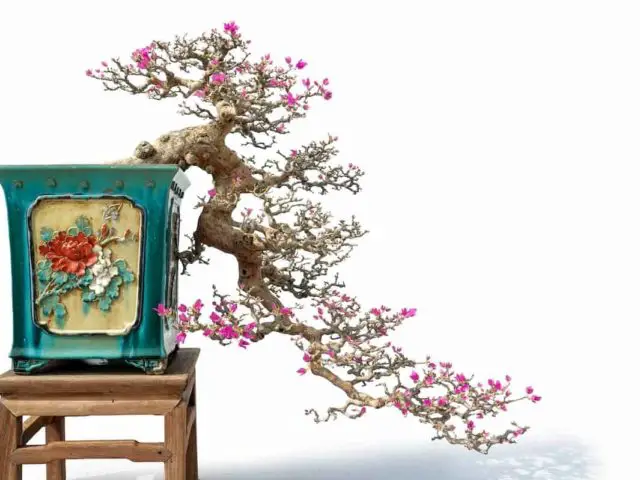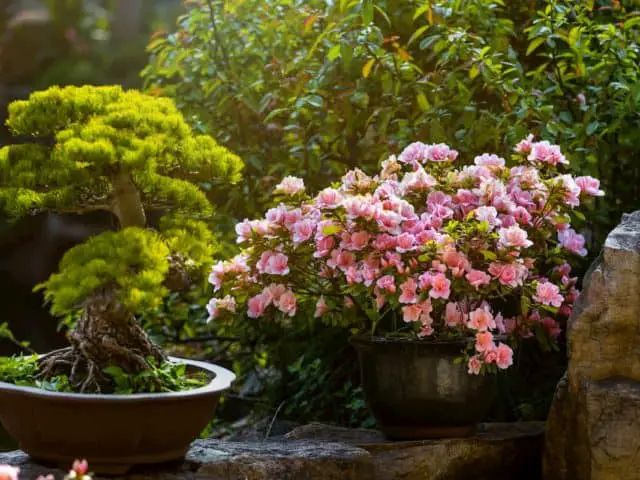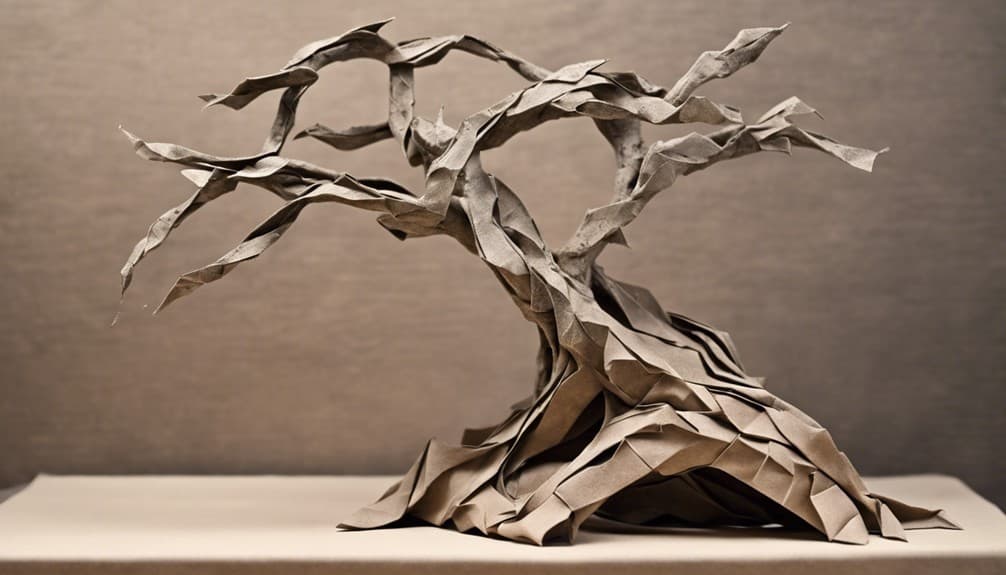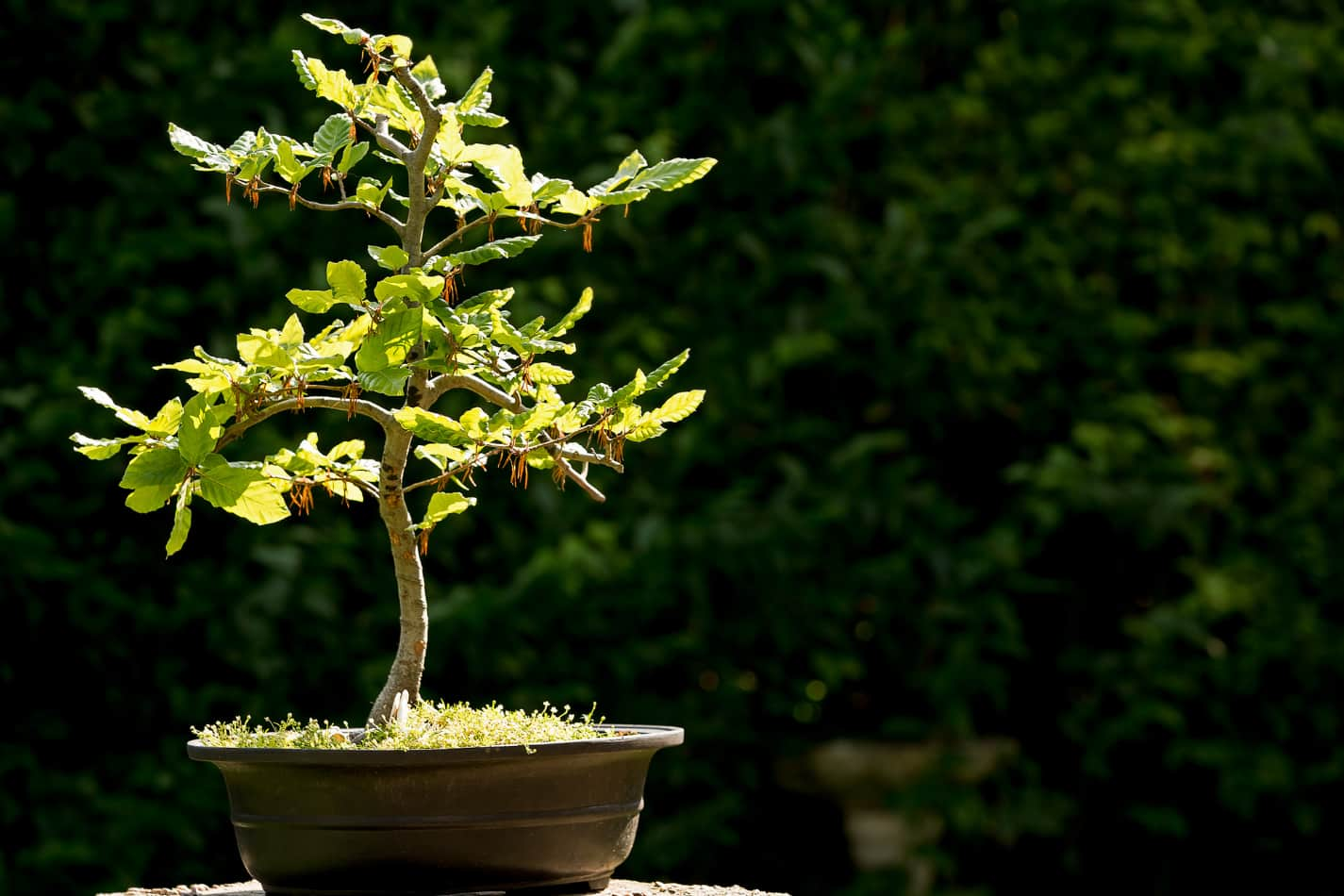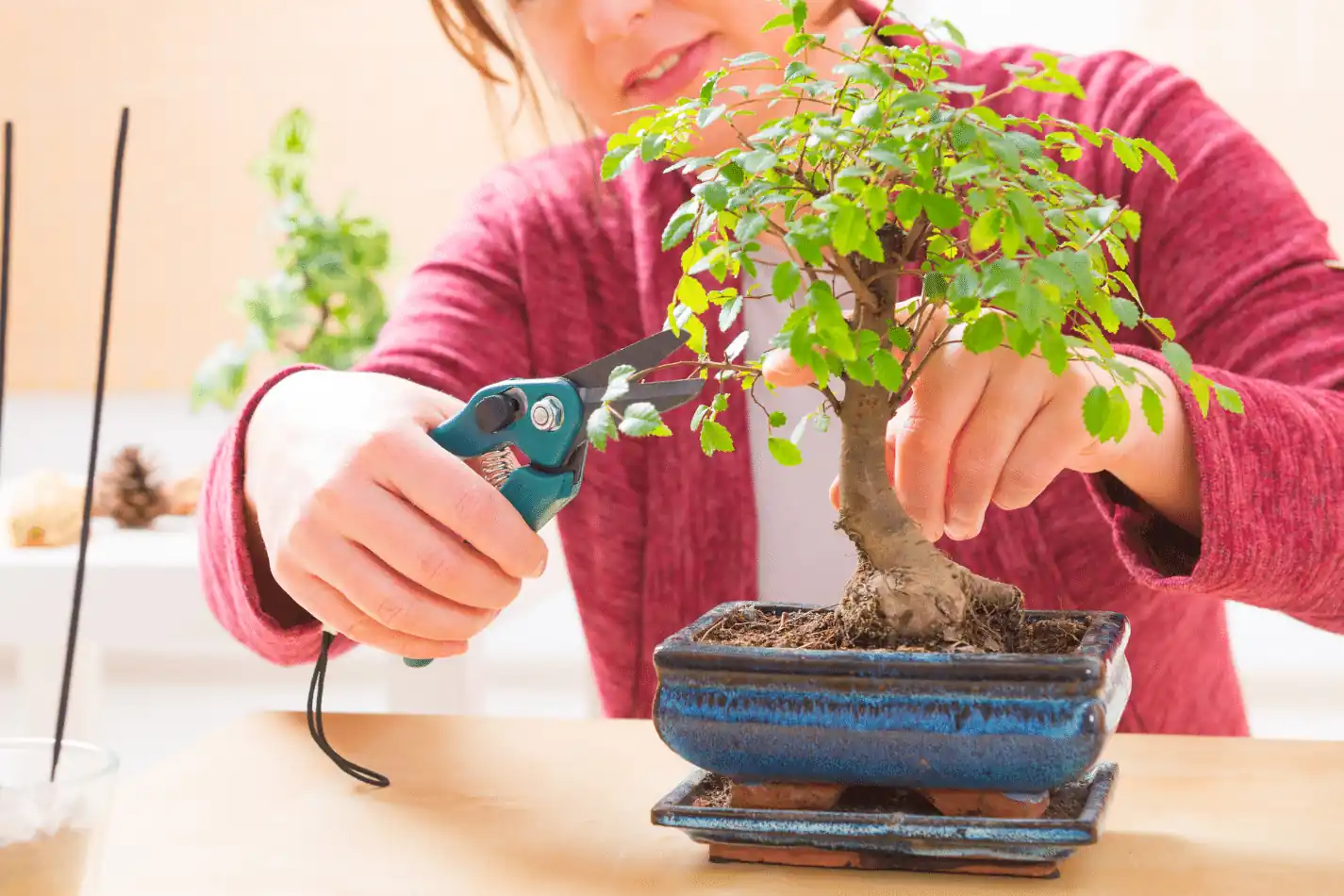The art of having a healthy bonsai tree allows the users to own a plant, which mimics the size, shape, and type of a full-grown tree, to be able to grow in a planter.
Bonsai is not just any other decorative planting; it is a form of art that has cultural significance in Japanese and Chinese cultures. The term bonsai itself translates to tray planting.
The practice follows cultivating a plant in a tray or planter. It depends on you, which category of trees you want to grow, and style it accordingly.
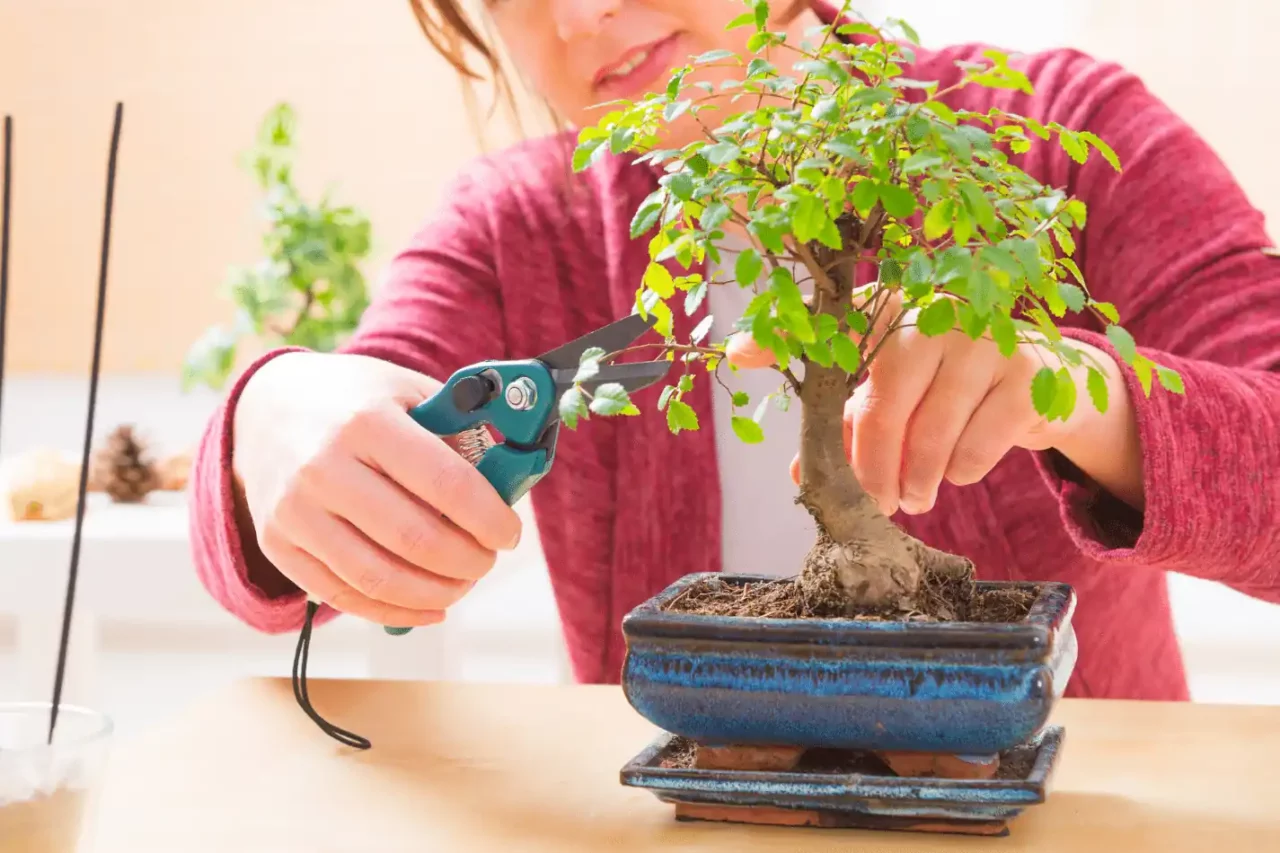
Benefits of Growing a Bonsai Tree
It is no wonder that a Bonsai tree makes for an excellent, eye-catching interior showpiece. However, growing a bonsai tree and helping it survive for years on end is a form of art and a commendable practice.
Apart from decorative purposes, there are certain benefits of growing a bonsai tree that very fewer people often talk about.
It may be due to the reason, that the beauty and art of creating a dwarfed version of a well-grown tree is a subject of spectacle in itself.
Some of the prime benefits of growing a Bonsai tree are as follows:
- Health benefits:
- A bonsai tree is said to have both physical and mental health benefits for the growers.
- People say many bonsai trees have helped them fight sore throats, colds, fatigue, and lethargy.
- It is also believed that a bonsai can help the grower relieve stress and mental exhaustion caused by fast-paced life.
- Stress reliever:
- Spending time with any plant, mostly bonsais, help people relieve their stress.
- Owning a bonsai and placing it in office or study rooms are often said to have a calming effect on the owner.
- Its aesthetically pleasing looks, which it adds to the workspace, plays a huge role in diminishing mental exhaustion caused by various reasons.
- Purification:
- Just like every other plant, bonsai plays a critical role in the purification of air. Having a bonsai in an office room or a study purifies the air of surrounding areas and clears it of any toxic air pollutant.
- Increases patience:
- When you think about it, growing a bonsai flourishingly requires extreme patience. You are required to constantly care for the tree, for it to become an attractive bonsai.
- It requires timely watering, trimming off the excess branches and stems, and fertilizing it regularly. As you set up a routine to take care of your bonsai tree, it builds up the patience to wait and watch it grow as well as make you a disciplined individual.
Bonsai is not like any other interior decorative plant.
Bonsai is different from other decorative plants on many levels. While other plants can be allowed to grow as much as it wants, bonsai is a dwarf version of different plants.
Most decorative plants include cacti, succulents, aloe, snake plants, etc. However, bonsai can contain an extensive range of plants from the categories of deciduous trees, evergreen and pines, and conifer trees.
Growing a bonsai is not as expensive as you think. Many people who are interested in growing a bonsai tree, often refrain from doing so wondering whether it is an expensive process.
This notion comes from the fact that many readymade bonsai trees, that are available to buy, are expensive enough to put a hole in your pocket. These bonsai trees, which are on the costly side of the spectrum is because they are quite old, some even counting up to decades, if not centuries.
If you are interested in growing your bonsai, you can do it at home with certain tools and techniques. First, you will have to be aware of what kind of bonsai trees you are willing to grow.
Since you can grow a bonsai tree from different trees category, you should choose whether you would like to raise a deciduous tree, evergreen broadleaf trees, or pines.
- Deciduous Trees
- The deciduous trees shed their leaves every fall.
- If you are attracted to creating a small interior bonsai garden to imitate the outside nature’s season change, choosing a tree from the deciduous category is the way to go.
- Evergreen Broadleaf Trees
- The broadleaf evergreen does not shed its leaves all year-round.
- If you like to upkeep the nature-inspired interior of your home without having to change it according to the seasons. Many people like having evergreen trees as bonsais because it gives them a sense of stability and the trees are never with bare stems.
- Pines
- If you miss the pines and fir from the mountains where you once went for vacation or just because you like pines more than other trees, you can also choose trees from the pine and conifers category.
- Pine trees are luscious-looking and always make the surrounding smells like fresh, woody musk. So bonsais of this category not only makes for a good decoration but also for a good nature-like scent, that is not too overwhelming.
Types of bonsai you could choose as a beginner.
As a beginner, it could be quite a hassle to choose a tree to grow as a bonsai if you have no idea how everything works. Each bonsai tree requires different amounts of water, sunlight or shade, and varied type of soil.
If you are one of the bonsai enthusiasts who have always loved seeing the trees in display and has decided to start your bonsai tree, this list will help you to choose the best tree from a plethora:
Junipers
Junipers are a part of the pine and conifer family. Juniper bonsais make for perfect bonsais because of their small yet sharp foliage, fitting just perfectly with the concept of a miniature plant.
Since Junipers are mostly outdoor plants, you can either place them right by the window or at your balcony or patio. Depending on the species you can either choose trees with dark green, pale green, or yellow needles.
- Soil type: Dry Soil, that is neither acidic nor basic.
- Sunlight: Grows best under bright sunny light
- Watering frequency: To avoid the rotting of the roots, you should keep an eye on the amount of water that goes into the tree. You should only water the plant once the soil is completely dry.
Pine trees
Pine trees are perfect for beginners to start their first bonsai cultivation because these trees can be shaped to any style of their liking.
They are extremely trainable, and the branches do not require much effort to style in any way the owners like. It gives them freedom and flexibility giving their artistic vision a beautiful shape.
- Soil type: Dry soil that is pH neutral
- Sunlight: Pine bonsais grow massively under full sun. So you can either place it on your balconies or in your studies near a window that receives full sun all day long.
- Watering frequency: You do not need a set schedule to water your pine bonsais. Either you can choose to water it every couple of days or whenever you are convinced that the soil has gone extremely dry.
Cedar trees
If you have an interior that echoes the nature-inspired looks, the best bonsai for you is to own an evergreen tree. Since the evergreen tree never loses its leaves during the fall season, it makes for a perfect bonsai choice.
With evergreen trees, your bonsai would never be without leaves, and you will have a great bonsai to match your preferred interiors.
However, if you are a beginner, you should take some advice or help from an expert to grow cedar. Compared to other bonsais, cedar trees require a bit more attention and specialized care than the others.
- Soil type: Cedar trees thrive best in soil that has moisture. It also works best in alkaline or clay soils.
- Sunlight: These trees require direct sunlight. So you can either have it on your window sill, balcony, or your patio.
- Watering frequency: Maintain a regular watering schedule for the cedar bonsai to grow beautifully. Watering every other day helps the cedar roots to retain the moisture. However, do not overwater it.
Japanese Flowering Cherry
One of the most eye-pleasing and beautiful bonsais that you could ever grow as a beginner, is Japanese Flowering Cherry.
These deciduous trees make for one of the best ornamental trees and are easier to train and shape in any way you like.
The branches and trunks of Japanese flowering cherry are not as hard as other bonsais. The white and pink flowers often brighten up the indoors and make the surroundings look more vibrant.
- Soil Type: Well-drained soil with a ph level of 5.5 – 6.5 works best for Japanese flowering cherry. Instead of letting the soil dry completely, keep it moist to help the bonsai survive perfectly.
- Sunlight: Japanese Cherry blooms beautifully both indoor and outdoor. However, many experts suggest that you should put it outdoor in the summer months for it to absorb all the necessary nutrients from the sunlight and the surrounding environment.
- Watering frequency: since Japanese flowering cherry blooms better with moist soil, you should water the plant frequently. However, keep in mind that the soil mixture is neither too dry nor waterlogged, as a result of too much watering.
Pomegranate
Pomegranate is one of the easiest fruit-bearing trees to grow. It is a perfect tree for both decorative and fruit-bearing purposes. Since a pomegranate plant’s trunk is naturally knobbly and twisted, it gives a sense of aesthetic in its natural form.
So when you make a bonsai out of a pomegranate to mimic a full-grown tree, nothing ever goes wrong. Yes, the pomegranates are edible as well.
- Soil Type: It might be one of the easiest trees to maintain because pomegranate trees grow well with dry, moist as well as wet soil for a limited amount of time. The pH of the soil should be between 5.5 – 7.
- Sunlight: Pomegranates bonsais can be grown in both indoor and outdoor setting. However, you should avoid it putting outside in frost and freezing temperatures. You can also put it under direct sunlight.
- Watering Frequency: Even though pomegranate bonsais are drought resistant, you should water it at a regular interval. These trees grow better with a constant supply of water.
These are some of the bonsais tree options that a beginner could try their hands on. With proper care and tools, however, they can grow any bonsais they want and prefer.
Tools require raising a bonsai tree and the budget you should keep
If you are planning to start a bonsai tree business, then you will need a huge amount of tools and applications.
However, if you are planning to raise a tree or two for fun and include it in your interior decoration, then a limited amount of tools is what you need to start your bonsai-parent journey.
The three most essential tools that a beginner needs are a bamboo stick, pruning shears, and concave branch cutters.
Bamboo chopstick
A bamboo stick has more than one use in growing a bonsai tree and I personally own this set of chopstick pairs from amazon.
- If you re-pot your bonsai tree for whatever reason, you can use the bamboo stick to remove the old soil from the roots of the bonsai plant. Chopsticks can reach the smallest of crevices to clean the soil out of it.
- Bamboo chopsticks can also be used to gauge the water so that you do not underwater or overwater your plants. You just need to put the chopsticks in the soil and pull them out to check whether it is moist enough for the bonsai.
During summer days, when the water dries out quickly, it is a great way to check the moisture of the soil. Since growing a bonsai is different from any other plant, some of the bonsais might require extra attention.
So it is a great way to gauge the water level for the plants that need more water than the others.
Concave branch cutters
Since bonsais are the miniature versions of full-grown trees, one of the most crucial parts of growing it is to constantly trim off overgrown branches.
Concave branch cutters are designed to reach the branch ends and cutting them off precisely without harming the entire tree.
The wounds that a concave branch cutter creates on the tree heals faster than the ones created by shears or other cutting equipment. These cutters cause minimal damage to the tree, and there is very little scarring on the plant’s body, allowing the bonsai to retain its beauty.
Pruning shears
When it comes to pruning a bonsai tree, you should be extremely careful not to cut off a branch that you do not want to, or it would completely ruin the tree’s shape and style. Pruning shears come in either carbon steel or stainless steel.
- Carbon steel pruning shears: These shears are less expensive, but are sturdy and reliable. It gives clean cuts to the plants. However, carbon steel is prone to rust. Carbon steel shears also require sharpening of the blade from time to time.
- Stainless Steel pruning shears: Stainless steel shears last for a longer time without sharpening for long time. These shears are expensive, are better looking than the carbon steel ones, and are not prone to rust.
Some of the other necessary tools to grow bonsai are:
- Pliers
- Large and small wire cutter
- Small root rake
- Large and small knob cutter
- Copper bonsai wires to train and shape the bonsai trees in a certain way.
Preparing your bonsai soil at home
As you look forward to growing your bonsai at home, you must know how important it is to prepare the soil mixture that contains all the required nutrients.
The soil preparation for bonsai might be different from soil preparation for other plants due to various reasons.
Since bonsai mimics a full-grown tree in the limited space of a small planter or a tray, the tree’s roots cannot branch out to a vast expanse of land.
Therefore, the soil you put in the pot is where they get all the nutrients to grow flawlessly and have a long and healthy life.
The soil mixture for the growing of bonsai must have good water retention but not so much that the roots start to rot from overwatering, aeration, and drainage also plays an important role. The most crucial component of bonsai soil is that its pH level should be somewhere between 6.5 – 7.5.
The ingredients in the soil are what you keep your eye open for. It should allow the soil to have air pockets, so that roots and micro-bacteria can get enough oxygen to breathe properly. The most popularly used soil ingredients are:
Akadama
It is a type of Japanese clay, which is hard-baked to provide better aeration to the bonsai roots. However, keep in mind that akadama only works best for two years.
Even though it is hard-baked, Akadama is said to have broken down after two years which results in the reduction of aeration.
You can either re-pot your bonsai every two years with new akadama or mix it with soil that has suitable drainage quality.
Akadama is a bit on the expensive side. Many people instead use other baked clays or kitten litter in their soil.
Lava Rock
Lava rock is one of the most popularly used soil components in growing a Bonsai.
The red color of the rocks creates a beautiful finishing look for the soil, and it is good to retain water. So crushed lava rocks are beautiful and functional.
Since these kinds of rocks have a colossal amount of holes in it, it makes for perfect soil ingredients that create air pockets in the soil and allowing the roots to breathe.
Pumice
Pumice is another one of the crucial and most popularly used soil components.
The reason behind pumice being a popular organic soil component is because pumice retains both water and nutrient incredibly well.
So, for the beginners, who do not have an idea of how to manage watering frequency, including pumice, will solve the problem.
Fine gravel
Mixing grit or fine gravel to the soil mix helps the grower create a mixture that drains excess water and keeps the soil aerated.
Including fine gravel as the bottom layer in the mixture in the bonsai pot will enhance the draining procedure.
Potting Compost
Compost is crucial in any kind of planting, whether growing a bonsai or a full-fledged tree. Composts are what provide nutrients to the tree.
The most popularly used and readily available bonsai organic compost is made of peat moss, broken down conifer bark, potting soil among others.
To make your compost mix, you can add two parts of peat or its substitute with two-parts of alpine grit that is lime-free.
How to prepare bonsai soil for different category trees
To make your bonsai grow to be a long-living and healthy life, you need to know how to mix your soil properly. Now that you know what ingredients to use to prepare the soil, the next thing you should know is the amount you should add.
Once you know which category your plant belongs to, this table will help you understand and make the perfect soil mixture:
| Category | Akadama | Pumice | Lava Rock |
| Evergreen Bonsai | 40% | 35% | 25% |
| Conifer Bonsai | 33% | 33% | 33% |
| Deciduous Bonsai | 50% | 25% | 25% |
However, depending upon the region you reside in, there may be a slight variation in the soil composition. For the first few months, make sure that you check up on your bonsai at least a few times a day.
If you see that the water absorption is high, you need to add a little more akadama than the other two. It will help with water retention.
However, if you notice that the topmost layer of the soil composition is wet after a few good hours, adding lava rock will help with the drainage, all the while retaining the moisture.
Should you add fertilizers to your bonsai tree?
If you are trying to grow your bonsai organically, you can use organic fertilizers that are available to buy. Both inorganic and organic fertilizers when added in the right amount will help your bonsai to grow with a sturdy body, as fertilizers will provide all the nutrients needed for them to grow.
Some of the most popular fertilizers that millions of people use worldwide come in both liquid and solid forms. Both liquid and solid fertilizers have their special results.
The best time to add fertilizers to a bonsai tree is during the season when it grows and requires many nutrients for a long and healthy life.
Well-grown bonsais make it easy for the grower to prune and style, as you can just trim off unnecessary branches, yet the tree will look fuller and livelier. Following the right fertilizing schedule will allow the bonsai to absorb all the required nutrients.
Using granulated fertilizers will help the soil mixture to provide the tree with nutrients without much hassle. The liquid fertilizers often required frequent application when compared to solid fertilizers.
However, many solid fertilizers require mixing with water before feeding to the bonsais. Depending on your watering schedule and fertilizing schedule you can choose whatever fertilizer you want.
Picking the right pot for your bonsai tree
Once you decide which category’s plant you would like to grow a bonsai of, and know all about your soil mix, the next thing to do is choosing the correct pot.
Choosing the right-sized pot makes your tree look better as well as offers the strong foothold support the tree requires.
You might think that you can just choose whichever pot you feel like and it is the least of your worries, however, you cannot be any further from the truth.
The design and style of your pot should match the femininity or masculinity of the tree. Yes, you read it right. A feminine tree growing on a masculine pot would look way out of the place.
While choosing the pot you should first look at the bonsai plant you are going to put into it.
- If your tree has smooth bark and curves on it with sparse branches, then your tree is feminine. In this case, you can choose pots that look sleek, have soft lines and delicate feet to balance the weight of the pot content. Also, the feet of the feminine pots are not as prominent as the masculine ones.
- If your tree’s body has a thick trunk, old bark, and dense branches, it is a masculine tree. To pot a masculine tree, you can choose pots with an angular body, clean lines, and big feet.
- If your tree has both masculine and feminine aspects, choose androgynous pots like drum pots, round pots, etc.
- Your pot should not be any higher than 2/3rd of the bonsai plant’s height. When you maintain this proportion your bonsai roots have a healthy and strong life.
Potting a bonsai plant
You have your tree of choice, the pot, the soil mixture, now you need to start potting the plant properly for a good end result. Once you found the correct pot, follow these steps to properly plant the tree:
- Once you remove the tree from the container it comes in, use a bamboo chopstick to remove some soil and bring out some roots.
- Spray the roots with some water to moisten them.
- Remove any dead leaves, branches and form a ball-like structure with the roots.
- Prepare the pot by first adding a layer of gravel or grit such as peat moss, pine bark, etc. Then add a layer of akadama, pumice, followed by a layer of bonsai soil.
- Put the tree carefully in the soil and water slightly.
- You can top the layer off with crushed lava rocks, these rocks provide good aeration as well as a beautiful look.
- Once you water it well, it’s time to start shaping the tree. Wrap a wire around the branches comfortably so that it gets the shape you want without any restriction. You can remove the wire once you are sure that the branch has received the desired shape. Ever so regularly, you can trim off extra branches.
This is how you pot a bonsai tree. You can follow the same steps every time you re-pot the tree.
Tips and tricks to grow bonsai trees
Growing a bonsai for beginners needs extreme care and time. If you are interested in making your bonsai a healthy and eye-pleasing tree, it is impartial that you invest all the time that is required.
Here are some tricks that you could incorporate with your bonsai care routine:
- Do not put the tree close to any heat source, be it fire, heater, or draft. The heat from artificial sources like heater will make your bonsai leaves dry, and your tree will eventually die.
- No matter the category, keep all your bonsai plants where it can receive proper sunlight during the day. However, if you are growing outdoor bonsai in a place where it freezes during winter, you had better bring the bonsai plant inside where it is safe from snow and below freezing temperature.
- To retain the moisture of the soil, the bonsais require humidity. Moist soil is the best for many bonsai trees. So keep in mind to create a humid temperature for your bonsai to grow.
- Keep the bonsais out of reach from your pets and toddlers. If they break off a branch accidentally, your bonsai will look deformed and all your pruning and styling will go to waste.
Keeping the insects and pests away
The best way to determine whether your bonsai has pests or insects is to keep an eye out if there are any weak branches or leaves in your tree.
Some of the prime symptoms of trees getting insects or mites are ants getting attracted to trees, leaves turning yellow and brown, droopy branches, and holes on the leaves.
If you encounter any of these problems, apply insecticides generously. Use a sprayer to spray the insecticides to the leaves’ undersides. You can also use organic soap sprays available on the market for the intended purpose.
Final Thoughts on How Do You Start a Bonsai Tree for Beginners
Bonsais are a form of art, that allows the grower to acknowledge the amount of hard work and patience that goes into it. Bonsai trees are aesthetically pleasing, good for the owners to brighten up their mood even on the most stressful days.
It also makes for a great gift to nature lovers, mostly when you have grown the bonsai tree yourself. Bonsais are a sentimental gift to anyone who acknowledges the amount of time and loves you have invested in growing it.
Now you’ve come to the end of the article, I hope this article would have helped you in starting your journey as a bonsai artist.
If you are just learning about bonsai trees and looking to purchase high-quality trees that will likely live longer than you then I would highly suggest checking out Bonsai Boy Trees as they are a long-lasting New York business that provides trees for all price ranges!


